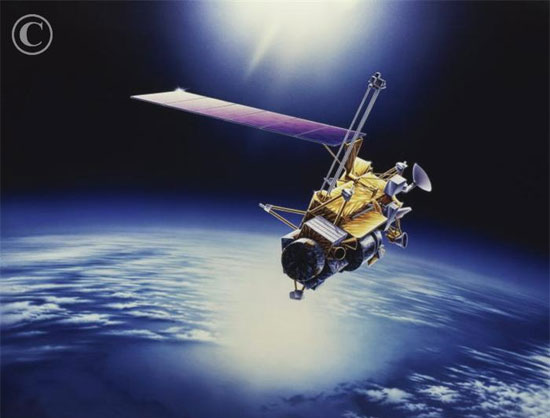UARS satellites will fall sooner than expected
According to NASA's announcement, the UARS satellite will enter the atmosphere on September 22, two days earlier than predicted.
>>>American artificial satellite falls on the following weekend
>>> NASA reassures about dead satellite fragments
The UARS scientific satellite (Upper Atmosphere Research Satellite) was used to study the atmospheric height released in September 1991 from space shuttle Discoverry. This device is approximately the size of a bus weighing more than 6 tons, more than 10 meters long, operating in orbit 600 kilometers from Earth and a slope of 57 degrees. The value of the satellite is estimated at $ 750 million.

In 2005, NASA abandoned the satellite, saying it would deviate from the shuttle's orbit, but it was not. Satellites go on descending altitude and automatically go into sleep mode and collide with an object on the same trajectory. Experts say that the object is a piece of Soviet-era Kosmos-1275 satellite and this random collision caused the UARS satellite to break into 26 pieces and fall to Earth with a total weight of 532kg. The largest piece is the frame of the device weighing about 150kg.
According to the data on the afternoon of September 16, the altitude of UARS's orbit is from 225 to 250 kilometers. NASA announced that the time when UARS went into the atmosphere changed because from the beginning of the week before the Sun's activity increased markedly (causing the Earth's atmosphere to "expand" causing the resistance to increase).
As predicted, the satellite region may fall between 57 north latitude and 57 latitude south, because the orbit of the satellite is tilted 57 degrees. The fragments of the satellite will fall on a land of 800 kilometers in diameter. Perhaps it does not cause any terror and the damage caused (in terms of human life) is negligible. The Russian news agency, Rosblatt , thinks the broken plate will fall into the ocean, rather than down to Moscow and its surroundings, although Moscow's position is at 54 degrees 44 minutes north latitude.
NASA experts emphasized that since the launch of Earth's first artificial satellite in 1957 it has never been recorded that any piece of cosmic trash fell to Earth. However, NASA's US space control system (NORAD) closely monitors this situation and regularly predicts the time and place of falling devices.
- American artificial satellites fall on the following weekend
- Old satellites race each other to fall to Earth
- Estimated Rosat satellite plunges down to the weekend
- The fall of satellites made the Earth
- American satellites carry cancer to Russia
- Accurate fall point of German satellites
- Identify the fall position of the US satellite
- GOCE satellite is about to fall to earth
- Shooting NASA satellite images is falling in the universe
- Satellite Rosat rushes into the earth's atmosphere
- NASA reassured about dead satellite fragments
- Vietnam can catch satellite fragments
 Van Allen's belt and evidence that the Apollo 11 mission to the Moon was myth
Van Allen's belt and evidence that the Apollo 11 mission to the Moon was myth The levels of civilization in the universe (Kardashev scale)
The levels of civilization in the universe (Kardashev scale) Today Mars, the sun and the Earth are aligned
Today Mars, the sun and the Earth are aligned The Amazon owner announced a secret plan to build a space base for thousands of people
The Amazon owner announced a secret plan to build a space base for thousands of people Artificial satellite missing for 40 years suddenly returns, leaving scientists bewildered
Artificial satellite missing for 40 years suddenly returns, leaving scientists bewildered  What exactly is the space signal detected by Tesla?
What exactly is the space signal detected by Tesla?  Satellite debris poses a serious threat to the atmosphere
Satellite debris poses a serious threat to the atmosphere  Declassified spy satellite, 1,400-year-old ghost town appears
Declassified spy satellite, 1,400-year-old ghost town appears  Britain's oldest satellite mysteriously moves
Britain's oldest satellite mysteriously moves  Boeing satellite explodes in space
Boeing satellite explodes in space 